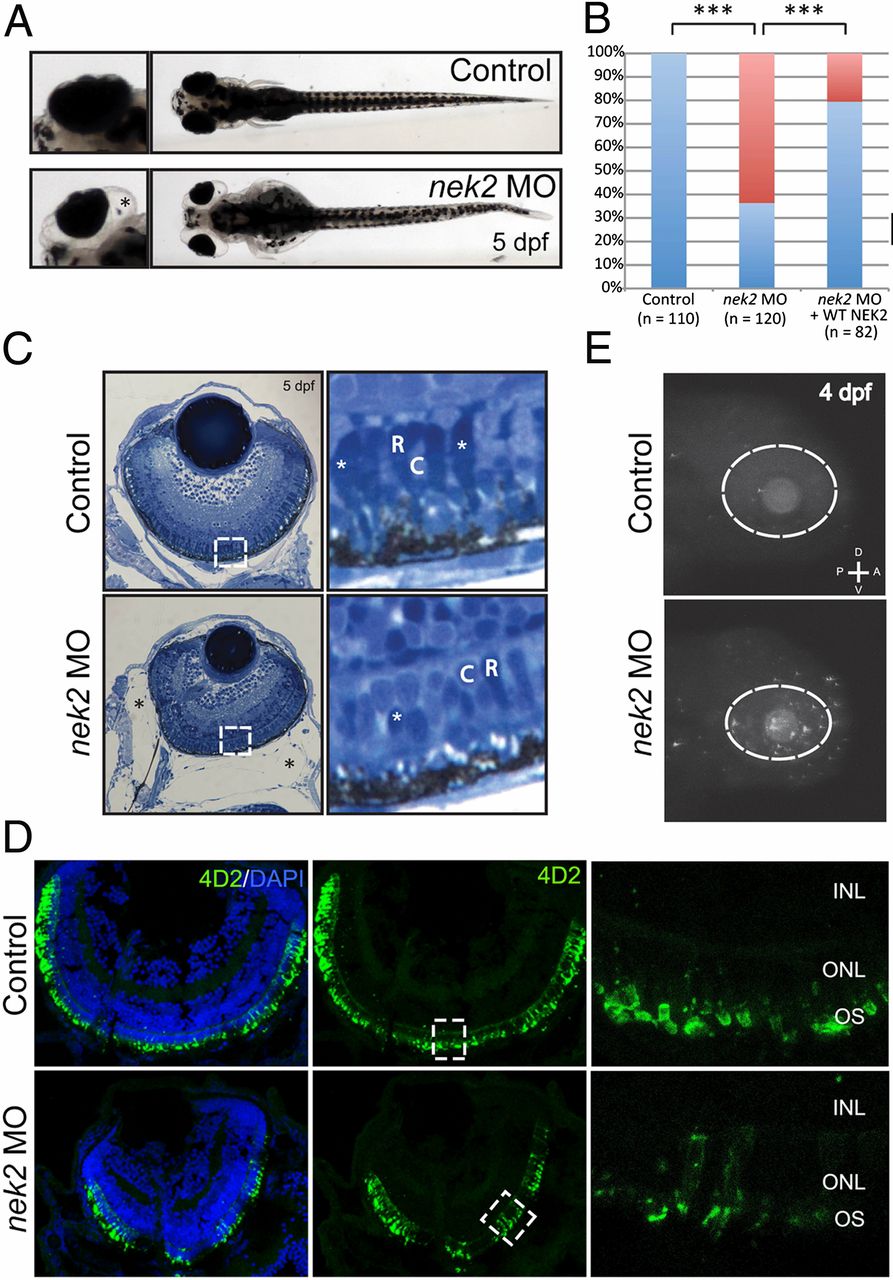Fig. 4 In vivo functional evaluation of nek2 loss in zebrafish. (A) Bright-field representation of 5-dpf control and nek2 morphant zebrafish embryos. Magnified Insets highlight ocular phenotypes including microphthalmia and enlarged eye sockets (marked by the black asterisk). (B) Ocular phenotypes including microphthalmia and enlarged eye sockets vs. normal phenotypes (red bars and blue bars, respectively) are quantified in control and nek2 morphant embryos, as well as in morphant animals rescued with human WT NEK2 mRNA. Asterisks indicate statistically significant differences between groups (P < 0.001). (C) Histology of control and nek2 morphant embryos also show enlarged eye sockets (marked by black asterisks) and microphthalmia. Magnified Insets show a decrease in the number of photoreceptors with apparent changes in domains of condensed chromatin (white asterisks). C, cones; R, rods. (D) Immunohistochemical analyses of retinal cryosections from control and nek2 MO embryos, stained with DAPI (blue) and the 4D2 antibody against rhodopsin (green). Suppression of nek2 results in the depletion of rods and in the mislocalization of rod opsin from the outer segment (OS) of photoreceptors. INL, inner nuclear layer; ONL, outer nuclear layer. (E) TUNEL immunofluorescent images of 4-dpf embryos, showing an increase in the number of apoptotic cells in nek2 morphant embryos. The dotted ovals indicate the position of the eye. A, anterior; D, dorsal; P, posterior; V, ventral.
Image
Figure Caption
Figure Data
Acknowledgments
This image is the copyrighted work of the attributed author or publisher, and
ZFIN has permission only to display this image to its users.
Additional permissions should be obtained from the applicable author or publisher of the image.
Full text @ Proc. Natl. Acad. Sci. USA

